iPhone 13 vs. iPhone 13 Pro: Which should you buy in 2022?
In this comparison, we’re specifically focusing on the 6.1-inch iPhone 13 and 6.1-inch iPhone 13 Pro. There are a lot of similarities between the iPhone 13 mini and the iPhone 13 and iPhone 13 Pro Max, but there are also some key differences. Stay tuned to 9to5Mac in the coming days and weeks for further comparisons of where Apple's iPhone lineup currently stands.
iPhone 13 and iPhone 13 Pro: Display
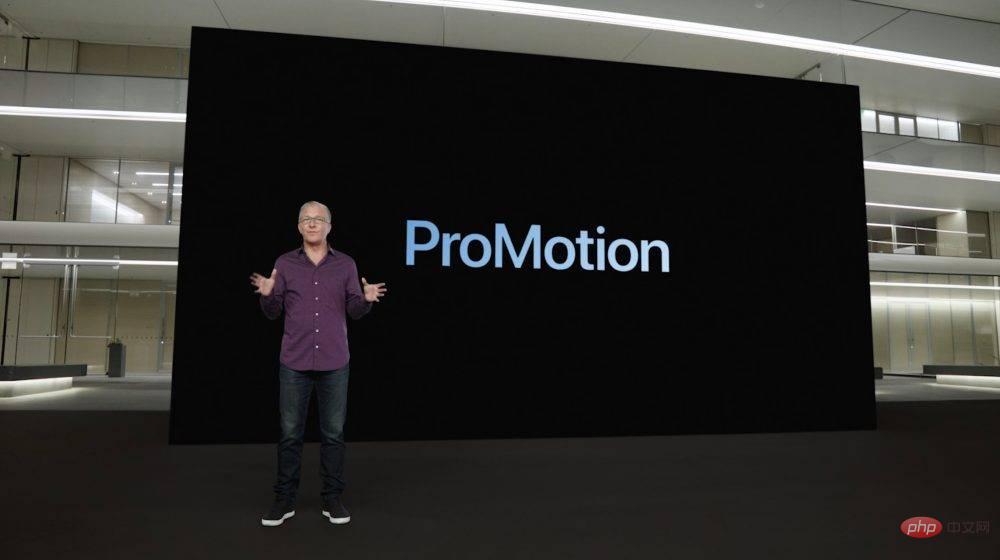
iPhone 13 and iPhone 13 Pro feature a 6.1-inch Super Retina XDR display with OLED technology and resolution is 2532 x 1170 pixels. This equals 460 pixels per inch. However, the iPhone 13 Pro has a maximum brightness of 1,000 nits, while the iPhone 13 has a maximum brightness of 800 nits. For HDR content, however, both can hit a maximum brightness of 1,200 nits.
There’s one major difference between the iPhone 13 and iPhone 13 Pro displays: ProMotion technology. Exclusive to iPhone 13 Pro, Apple ProMotion display technology brings an adaptive refresh rate of up to 120Hz to iPhone for the first time. This means the iPhone 13 Pro screen's refresh rate can scale between 10Hz and 120Hz, depending on what you do on the device.
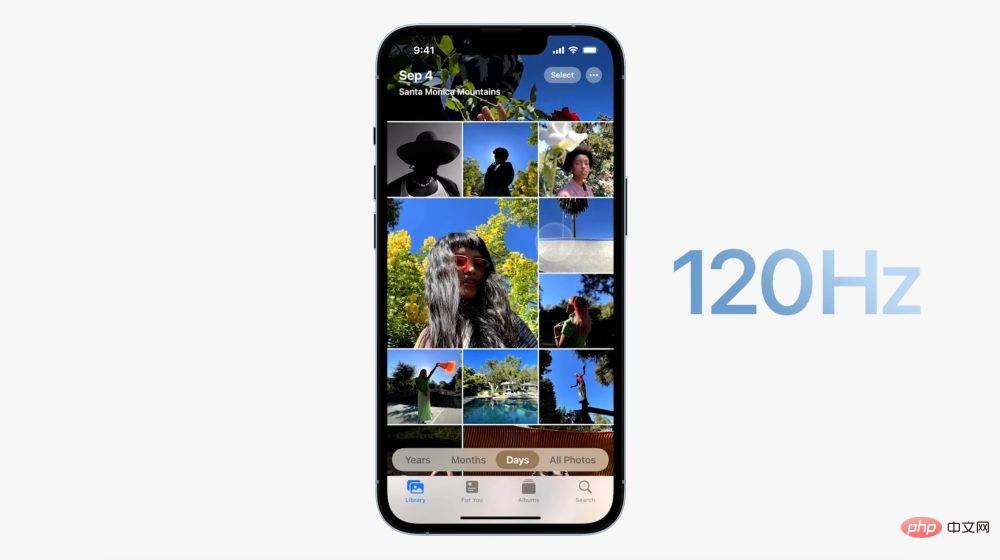
In practical use, this should mean things like scrolling and animations will be smoother. ProMotion also makes the display more efficient, as it can scale all the way to 10Hz when you're doing things like reading.
Additional display features on iPhone 13 and iPhone 13 Pro include:
- 2,000,000:1 contrast ratio
- True Tone display
- Wide color gamut (P3)
- Tactile Touch
- HDR Display
Design
In terms of design, iPhone 13 and iPhone 13 Pro are similar, both are flat edge-to-edge and near-edge-to-edge displays. Both devices have a slightly smaller notch at the top and are about 20% smaller in width.
One major difference is that the iPhone 13 is made from what Apple calls "aerospace-grade aluminum," while the iPhone 13 Pro is made from "surgical-grade stainless steel." That means the iPhone 13 has a brushed aluminum finish, while the iPhone 13 Pro has a shiny stainless steel finish.
The difference in materials makes the iPhone 13 Pro slightly heavier than the iPhone 13. The iPhone 13 weighs 6.14 ounces (174 grams), while the iPhone 13 Pro weighs 7.19 ounces (204 grams).
The iPhone 13 Pro and iPhone 13 have the same dimensions:
- Height: 5.78 inches (146.7mm)
- Width: 2.82 inches (71.5mm)
- Thickness: 0.30 inches (7.65 mm)
iPhone 13 and iPhone 13 Pro are rated IP68 for splash, water, and dust resistance. With this rating, iPhone 13 and iPhone 13 Pro can withstand submersion to a maximum depth of 6 meters for up to 30 minutes.
Performance and Battery Life
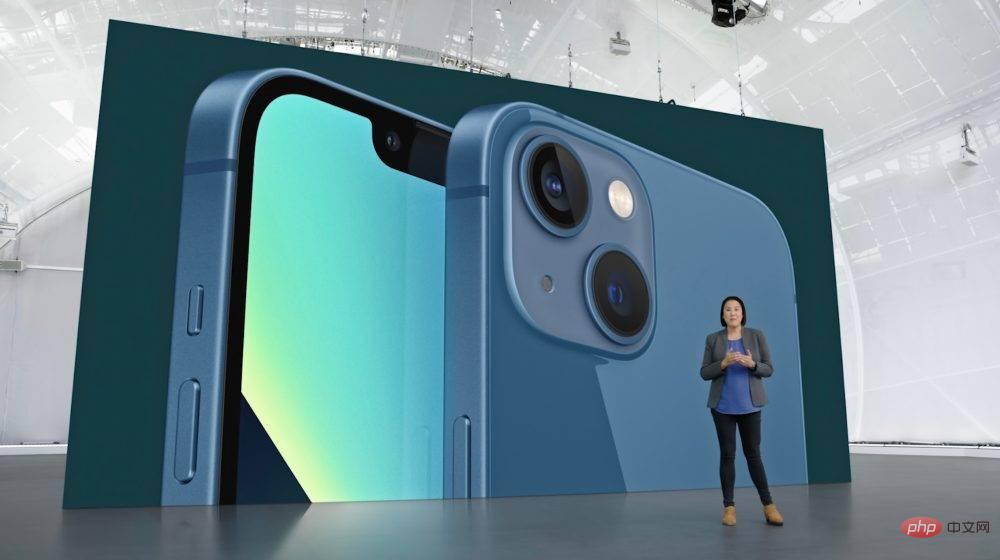
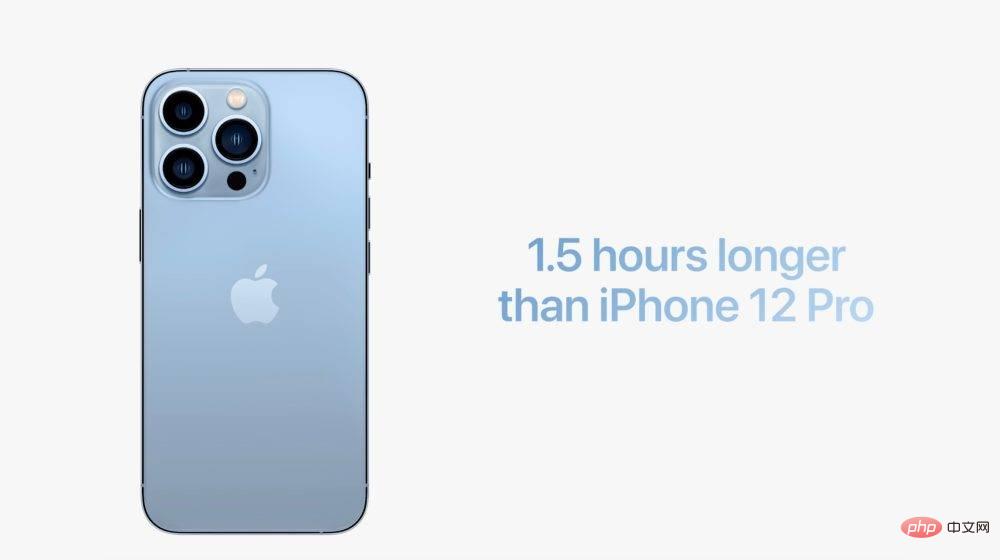
iPhone 13 Battery Estimate:
- Audio Playback: 75 hours
- Video Playback (Streaming): Up to 15 hours
- Video playback: up to 19 hours
iPhone 13 Pro battery estimate:
- Audio playback: 75 hours
- Video playback (streaming): up to 20 hours
- Video playback: up to 22 hours
Connectivity
Have you heard the good news about 5G? Just like their predecessors, both iPhone 13 and iPhone 13 Pro support 5G. Apple says this enables "blazing-fast downloads and high-quality streaming." This includes support for mmWave 5G connectivity in the U.S., as well as support for sub-6GHz 5G in the U.S. and other countries.
Camera
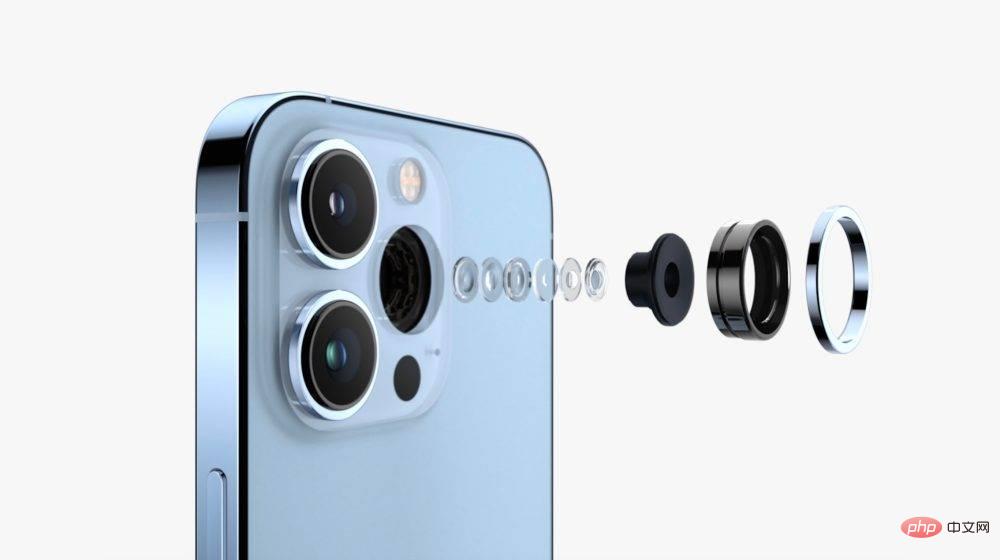
However, where you really start to notice the differences between the iPhone 13 and iPhone 13 Pro is in the camera technology. The iPhone 13 features a dual 12MP camera system with wide-angle and ultra-wide angle cameras on the back. On the front, you'll find a 12MP f/2.2 aperture selfie camera.
Here are the full camera features of the iPhone 13:
- Dual 12MP camera system: Wide-angle and ultra-wide-angle cameras
- Wide-angle: ƒ/1.6 aperture
- Ultra wide angle: ƒ/2.4 aperture and 120° field of view
- 2x optical zoom
- Digital zoom up to 5x
- Portrait mode with advanced bokeh and depth control
- Portrait lighting with six effects (Natural, Studio, Silhouette, Stage, Stage Mono, High Key Mono)
- Sensor-shift optical image stabilization (wide angle)
- Seven-element lens (wide angle); five-element lens (ultra wide angle)
- True Tone flash with slow sync
- Panorama (up to 63MP)
- Sapphire Crystal Lens Cover
- 100% Focus Pixels (Wide)
- Night Mode
- Deep Fusion
- Smart HDR 4
- Photography Style
- Wide color gamut capture for photos and live photos
- Lens correction (ultra wide angle)
- Advanced red-eye correction
- Automatic image stabilization
- Burst Mode
- Photo Geotagging
- Captured image formats: HEIF and JPEG
Meanwhile, the iPhone 13 Pro comes with a triple lens on the back Camera systems and lidar scanners. The triple-lens camera setup features telephoto, wide-angle, and ultra-wide-angle cameras. On the front, you'll find the same 12MP camera with f/2.2 aperture.
Here are the full camera features of the iPhone 13 Pro:
- Pro 12MP Camera System: Telephoto, Wide and Ultra Wide Cameras
- Telephoto: ƒ/2.8 Aperture
- Wide angle: ƒ/1.5 aperture
- Super wide angle: ƒ/1.8 aperture and 120° field of view
- 3x optical magnification, 2x optical reduction; 6x optical zoom Range
- Digital zoom up to 15x
- Lidar scanner enabled Night Mode Portrait
- Portrait mode with advanced bokeh and depth control
- Features Portrait lighting in six effects (Natural, Studio, Silhouette, Stage, Stage Mono, High Key Mono)
- Dual Optical Image Stabilization (Telephoto and Wide Angle)
- Sensor Shift Optical image stabilization (wide-angle)
- Six-element lens (telephoto and ultra-wide-angle); Seven-element lens (wide-angle)
- True Tone flash with slow sync
- Panorama (up to 63MP)
- Sapphire Crystal Lens Cover
- 100% Focus Pixels (Wide)
- Night Mode
- Deep Fusion
- Smart HDR 4
- Photography Style
- Macro Photography
- Apple ProRAW
- Wide Color Gamut Capture for Photos and Live Photos
- Lens Correction (Ultra Wide Angle)
- Advanced Red Eye Correction
- Photo Geotagging
- Auto Image Stabilization
- Burst Mode
- Captured image formats: HEIF and JPEG
Video recording

In terms of video recording, both iPhone 13 and iPhone 13 Pro support up to 24 4K video recording at 25 fps, 30 fps or 60 fps, and Dolby Vision HDR video recording up to 4K 60 fps. Both devices also feature a movie mode for recording shallow depth of field video at 1080p and 30 fps.
One notable difference is that the iPhone 13 Pro supports Apple’s ProRes video recording standard, up to 4K 30 fps (1080p 30 fps on 128GB storage). This is a major feature for professional videographers who want the highest quality and lowest compression possible.
The above is the detailed content of iPhone 13 vs. iPhone 13 Pro: Which should you buy in 2022?. For more information, please follow other related articles on the PHP Chinese website!

Hot AI Tools

Undresser.AI Undress
AI-powered app for creating realistic nude photos

AI Clothes Remover
Online AI tool for removing clothes from photos.

Undress AI Tool
Undress images for free

Clothoff.io
AI clothes remover

Video Face Swap
Swap faces in any video effortlessly with our completely free AI face swap tool!

Hot Article

Hot Tools

Notepad++7.3.1
Easy-to-use and free code editor

SublimeText3 Chinese version
Chinese version, very easy to use

Zend Studio 13.0.1
Powerful PHP integrated development environment

Dreamweaver CS6
Visual web development tools

SublimeText3 Mac version
God-level code editing software (SublimeText3)

Hot Topics
 1387
1387
 52
52
 Why can't the Bybit exchange link be directly downloaded and installed?
Feb 21, 2025 pm 10:57 PM
Why can't the Bybit exchange link be directly downloaded and installed?
Feb 21, 2025 pm 10:57 PM
Why can’t the Bybit exchange link be directly downloaded and installed? Bybit is a cryptocurrency exchange that provides trading services to users. The exchange's mobile apps cannot be downloaded directly through AppStore or GooglePlay for the following reasons: 1. App Store policy restricts Apple and Google from having strict requirements on the types of applications allowed in the app store. Cryptocurrency exchange applications often do not meet these requirements because they involve financial services and require specific regulations and security standards. 2. Laws and regulations Compliance In many countries, activities related to cryptocurrency transactions are regulated or restricted. To comply with these regulations, Bybit Application can only be used through official websites or other authorized channels
 Anbi app official download v2.96.2 latest version installation Anbi official Android version
Mar 04, 2025 pm 01:06 PM
Anbi app official download v2.96.2 latest version installation Anbi official Android version
Mar 04, 2025 pm 01:06 PM
Binance App official installation steps: Android needs to visit the official website to find the download link, choose the Android version to download and install; iOS search for "Binance" on the App Store. All should pay attention to the agreement through official channels.
 Sesame Open Door Trading Platform Download Mobile Version Gateio Trading Platform Download Address
Feb 28, 2025 am 10:51 AM
Sesame Open Door Trading Platform Download Mobile Version Gateio Trading Platform Download Address
Feb 28, 2025 am 10:51 AM
It is crucial to choose a formal channel to download the app and ensure the safety of your account.
 How to solve the problem of 'Undefined array key 'sign'' error when calling Alipay EasySDK using PHP?
Mar 31, 2025 pm 11:51 PM
How to solve the problem of 'Undefined array key 'sign'' error when calling Alipay EasySDK using PHP?
Mar 31, 2025 pm 11:51 PM
Problem Description When calling Alipay EasySDK using PHP, after filling in the parameters according to the official code, an error message was reported during operation: "Undefined...
 Download link of Ouyi iOS version installation package
Feb 21, 2025 pm 07:42 PM
Download link of Ouyi iOS version installation package
Feb 21, 2025 pm 07:42 PM
Ouyi is a world-leading cryptocurrency exchange with its official iOS app that provides users with a convenient and secure digital asset management experience. Users can download the Ouyi iOS version installation package for free through the download link provided in this article, and enjoy the following main functions: Convenient trading platform: Users can easily buy and sell hundreds of cryptocurrencies on the Ouyi iOS app, including Bitcoin and Ethereum. and Dogecoin. Safe and reliable storage: Ouyi adopts advanced security technology to provide users with safe and reliable digital asset storage. 2FA, biometric authentication and other security measures ensure that user assets are not infringed. Real-time market data: Ouyi iOS app provides real-time market data and charts, allowing users to grasp encryption at any time
 Sesame Open Door Exchange App Official Download Sesame Open Door Exchange Official Download
Mar 04, 2025 pm 11:54 PM
Sesame Open Door Exchange App Official Download Sesame Open Door Exchange Official Download
Mar 04, 2025 pm 11:54 PM
The official download steps of the Sesame Open Exchange app cover the Android and iOS system download process, as well as common problems solutions, helping you download safely and quickly and enable convenient transactions of cryptocurrencies.
 gate.io sesame door download Chinese tutorial
Feb 28, 2025 am 10:54 AM
gate.io sesame door download Chinese tutorial
Feb 28, 2025 am 10:54 AM
This article will guide you in detail how to access the official website of Gate.io, switch Chinese language, register or log in to your account, as well as optional mobile app download and use procedures, helping you easily get started with the Gate.io exchange. For more tutorials on using Gate.io in Chinese, please continue reading.
 Is there any mobile app that can convert XML into PDF?
Apr 02, 2025 pm 08:54 PM
Is there any mobile app that can convert XML into PDF?
Apr 02, 2025 pm 08:54 PM
An application that converts XML directly to PDF cannot be found because they are two fundamentally different formats. XML is used to store data, while PDF is used to display documents. To complete the transformation, you can use programming languages and libraries such as Python and ReportLab to parse XML data and generate PDF documents.



